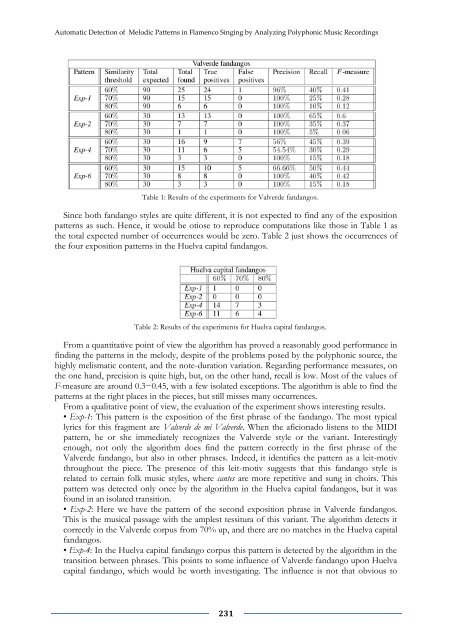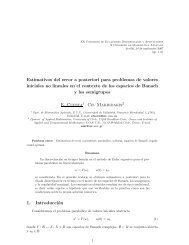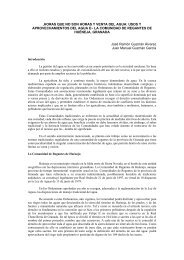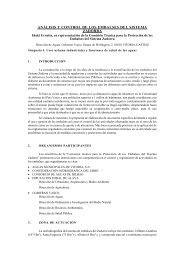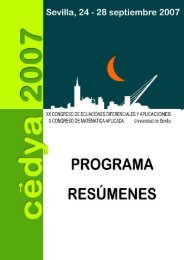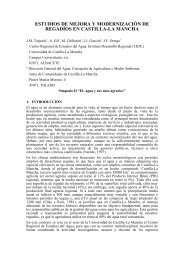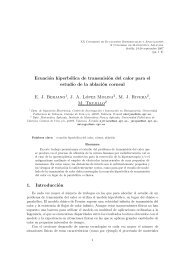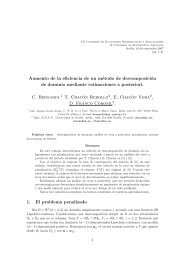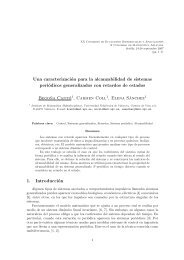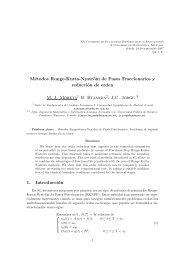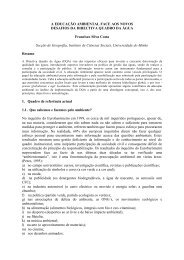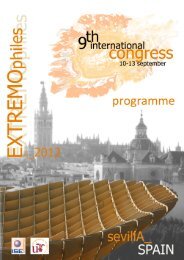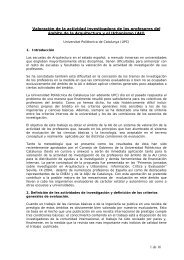LIBRO DE ACTAS (pdf) - Universidad de Sevilla
LIBRO DE ACTAS (pdf) - Universidad de Sevilla
LIBRO DE ACTAS (pdf) - Universidad de Sevilla
You also want an ePaper? Increase the reach of your titles
YUMPU automatically turns print PDFs into web optimized ePapers that Google loves.
Automatic Detection of Melodic Patterns in Flamenco Singing by Analyzing Polyphonic Music Recordings<br />
Table 1: Results of the experiments for Valver<strong>de</strong> fandangos.<br />
Since both fandango styles are quite different, it is not expected to find any of the exposition<br />
patterns as such. Hence, it would be otiose to reproduce computations like those in Table 1 as<br />
the total expected number of occurrences would be zero. Table 2 just shows the occurrences of<br />
the four exposition patterns in the Huelva capital fandangos.<br />
Table 2: Results of the experiments for Huelva capital fandangos.<br />
From a quantitative point of view the algorithm has proved a reasonably good performance in<br />
finding the patterns in the melody, <strong>de</strong>spite of the problems posed by the polyphonic source, the<br />
highly melismatic content, and the note-duration variation. Regarding performance measures, on<br />
the one hand, precision is quite high, but, on the other hand, recall is low. Most of the values of<br />
F-measure are around 0.3−0.45, with a few isolated exceptions. The algorithm is able to find the<br />
patterns at the right places in the pieces, but still misses many occurrences.<br />
From a qualitative point of view, the evaluation of the experiment shows interesting results.<br />
• Exp-1: This pattern is the exposition of the first phrase of the fandango. The most typical<br />
lyrics for this fragment are Valver<strong>de</strong> <strong>de</strong> mi Valver<strong>de</strong>. When the aficionado listens to the MIDI<br />
pattern, he or she immediately recognizes the Valver<strong>de</strong> style or the variant. Interestingly<br />
enough, not only the algorithm does find the pattern correctly in the first phrase of the<br />
Valver<strong>de</strong> fandango, but also in other phrases. In<strong>de</strong>ed, it i<strong>de</strong>ntifies the pattern as a leit-motiv<br />
throughout the piece. The presence of this leit-motiv suggests that this fandango style is<br />
related to certain folk music styles, where cantes are more repetitive and sung in choirs. This<br />
pattern was <strong>de</strong>tected only once by the algorithm in the Huelva capital fandangos, but it was<br />
found in an isolated transition.<br />
• Exp-2: Here we have the pattern of the second exposition phrase in Valver<strong>de</strong> fandangos.<br />
This is the musical passage with the amplest tessitura of this variant. The algorithm <strong>de</strong>tects it<br />
correctly in the Valver<strong>de</strong> corpus from 70% up, and there are no matches in the Huelva capital<br />
fandangos.<br />
• Exp-4: In the Huelva capital fandango corpus this pattern is <strong>de</strong>tected by the algorithm in the<br />
transition between phrases. This points to some influence of Valver<strong>de</strong> fandango upon Huelva<br />
capital fandango, which would be worth investigating. The influence is not that obvious to<br />
231


